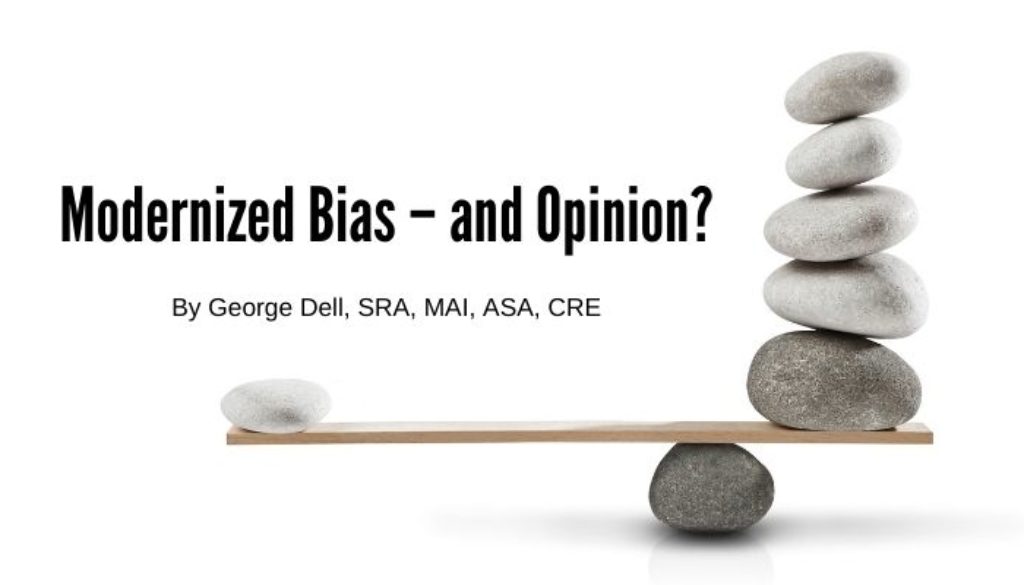Opinion is the required end product of appraisal, mandated by the quasi-governmental regulations. By “appraisal waiver” exception, analytic results may be allowed. (No opinion is necessary.) modernized
Editor’s Note: This post is an intersection of Appraisal Modernization, Part 6 and Bias Part 5
The FHFA (Federal Housing Finance Agency) wants input on:
- Appraisal modernization;
- Data and forms;
- AVMs (“automated” valuations); and,
- Potential bias issues.
An opiniated outline of these issues is in order . . . in order . . .
Appraisal modernization requires the best of AVM algorithms and expert human judgment — integrated.
What has made the old ways old is that technology has changed, but our ways have not. Appraisers continue to provide opinions, based on (potentially biased) “picking comps.” They then make adjustments based on this limited data, or “extensive experience.” Hybrid appraisals split up the data/adjustment appraisal process into reduced or segregated parts.
AVMs embrace sophisticated statistical algorithms, secret lest competitors use or share improved results. Both appraisals and AVMs only report market price, (although called ‘value’). As such, if there is any historical or current force on ethnic bias by neighborhood, both methods simply repeat the bias.
Appraisal modernization must embrace new methods and training. Whether by AVM, appraiser, BPO (Broker Price Opinion), “Evaluation,” or any other waivered or un-waivered method. The current AVM Reporting Standards Subcommittee concludes that the valuation process is identical for each and every approach or business model. Each apply four basic steps. Each requires judgment at some point:
- Problem recognition, assumptions, acceptable risk level;
- Data selection, integrity, and relevance;
- Predictive methods and algorithms;
- Seamless data stream delivery.
The only issue is the quality, speed, and cost of the above four steps. The business model nor modality matter. What matters is reduced to these four steps. Human judgment is required for each step.
In each case, there is some judgment on the appropriateness of the intended model/algorithm to the problem at hand. There is some judgment regarding the relevance (or non-relevance) of the data selection process. There is some judgment about the predictive algorithm to be used/reused. There is judgment, reliability scoring, or explanation of the process and result/opinion. The above judgment decisions are implicit in each and every valuation, no matter what the business model or standard.
As an example. For an AVM, someone makes a decision (based on other information) whether to try an AVM, an evaluation, a BPO (Broker Price Opinion), or appraisal ‘scope level.’ Someone decides an AVM ‘hit’ rate sufficient for a particular loan.
Valuations, to be modernized, must use modern methods. They must optimize the best of AVM algorithms and integrated human judgment, adapted to the risk/reliability level desired. Modernized valuation must apply modern science of data and modern human capacity. We have the knowledge; we have the expertise. We need a demand and regulatory guidance for optimum results – on behalf of all market participants — toward the public good.

Is Bias Biased? - George Dell, SRA, MAI, ASA, CRE
February 8, 2023 @ 10:38 am
[…] Note: This is another intersection of Modernization (Part IX) and Bias (Part […]
Move to EBV? Standards - George Dell, SRA, MAI, ASA, CRE
June 14, 2023 @ 1:16 am
[…] that the standard emphasizes a personal “opinion,” while audit emphasizes objective examination. The appraisal standard focuses on the […]